How does a folding propeller work?
Folding props or not – that’s the big question!At Flexofold we will always choose a folding propeller – and there are many good reasons why. There...
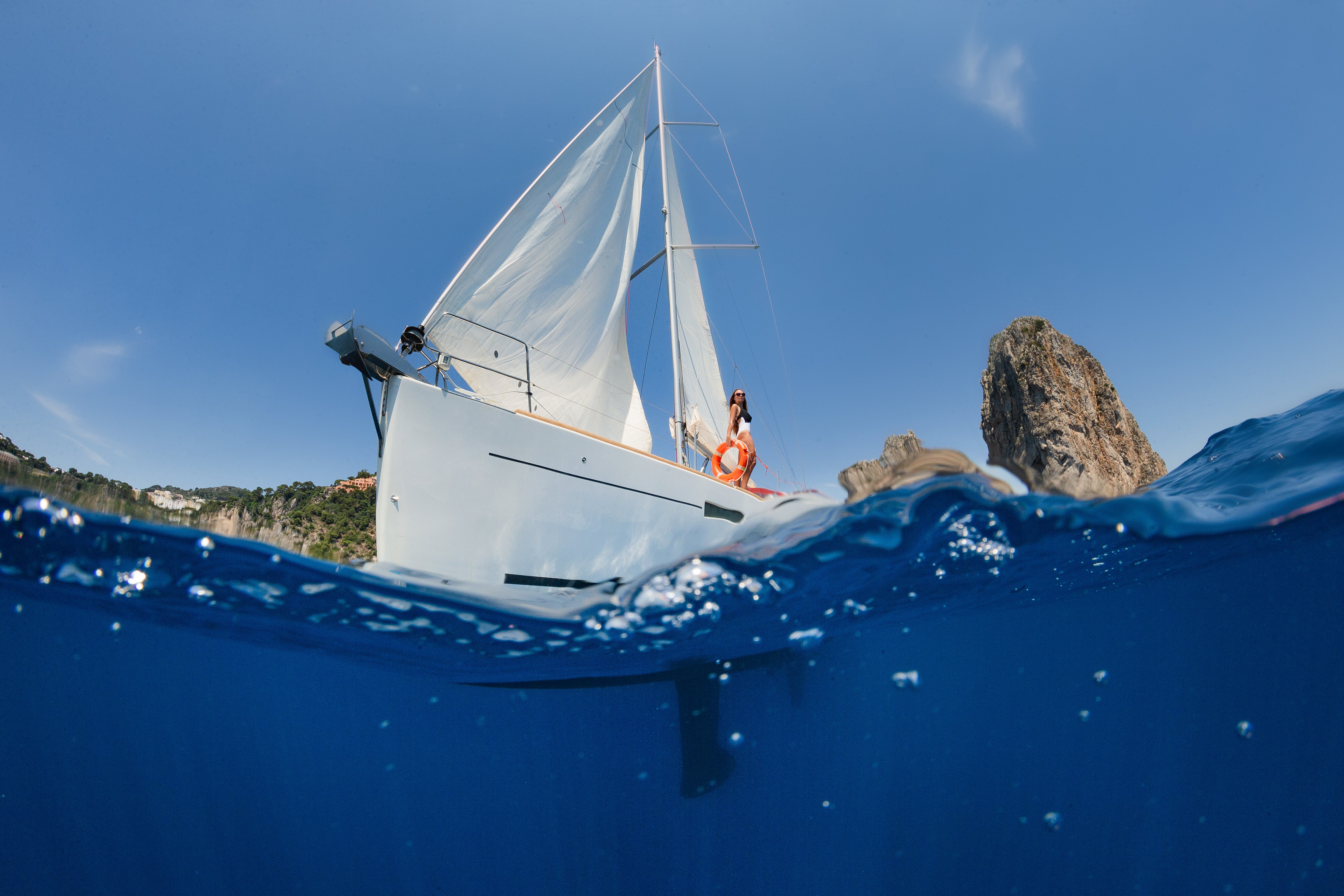
When deciding between a folding propeller and a feathering propeller, it might be difficult to determine which type of propeller to go with.
So, what's the best choice?
At Flexofold, we exclusively produce folding propellers, so they are naturally our preference.
Let's take a closer look at the differences between the various propeller types.

Anyone with a sailboat designed to accommodate either type of propeller – It's as simple as that!
Sailing is more than just a hobby. It's a lifestyle. A sailor values quality, and every detail onboard needs to function optimally, so you can navigate your boat with peace of mind, regardless of what Mother Nature throws at you. You rarely compromise when it comes to your passion, and you want quality onboard that meets your expectations.
So, what are your expectations? What do you expect from your sailing? Are you the adventurous type, thirsting for new challenges and intense experiences? Or are you more for the relaxed journey, where you can appreciate the silence and beauty of the sea?
Regardless of your sailing dreams and what type of sailor you are, we've done our best to help you find the answer to the question: "Which propeller is best for my boat?".
There’s a wide range of propellers you can fit on your sailboat.
The 3 primary models we will address in this blog post are:
A fixed propeller has fixed blades. This means that the blades cannot fold but remain extended in the same position, whether under sail or under power. It’s a less expensive model compared to folding propellers and feathering propellers, but in return, you get significant drag when sailing. Furthermore, this model has not undergone the same development over the years as the folding propeller has.
The increased drag means you'll need more wind in your sails when you cross the sea under sail. The drag slows down your sailing, and if there's not enough wind, you'll have to rely on your engine. The drag also means that you’ll lose momentum when tacking. Therefore, you'll need a good amount of wind pressure in the sails to build acceleration to get the boat up to speed again before you tack once more. The drag also means you'll need to start your engine a bit earlier than sailors with a folding propeller.
To reduce the drag, you can put the propeller in neutral, so the water pressure causes it to rotate. However, this has the effect of wearing out bearings etc. and you might hear a "growling" sound from the shaft and the propeller as they rotate. In this way, there's more wear on the smaller parts that require maintenance, and repairs might also be necessary. For you as a boat owner, this demands more effort on your part.
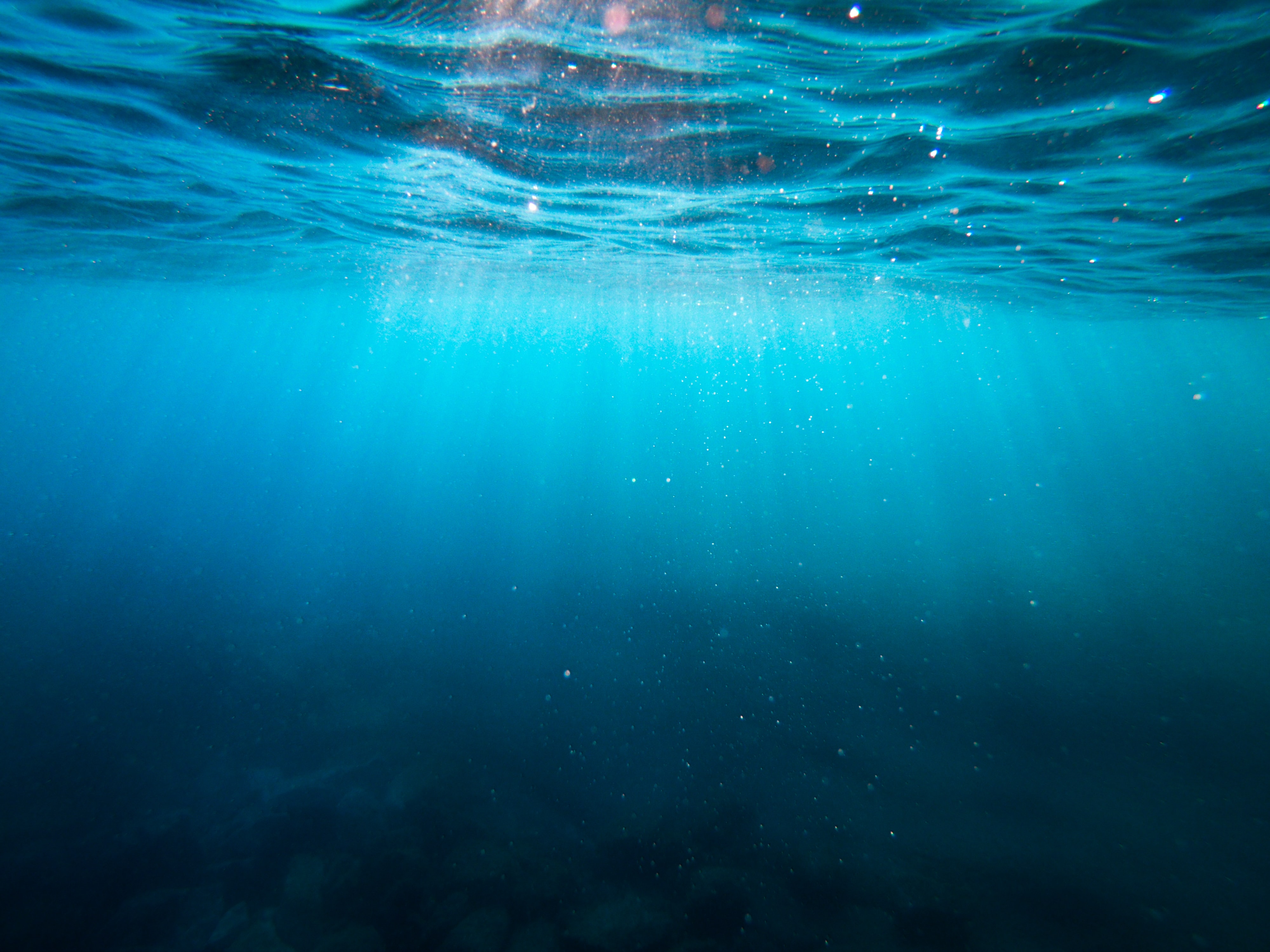
Unfortunately, the sea is filled with debris, including crab pots, fishing nets and fishing lines. Since the blades can't fold, sea debris and dirt can quickly get caught in them, and it can wrap so tightly that your propeller becomes inoperable.
On older boat models with a hull design that doesn't offer much space due to the keel, it's often seen that only a fixed propeller will fit. A folding propeller takes up more space than a fixed one when folded, and it has a longer hub. Given the boat's design leaves very little space, there won't be room for a folding propeller, as the blades won't be able to fold. However, boat hulls are increasingly designed differently, and therefore, it's possible to choose between different propeller types.
Another propeller option is the feathering propeller.
With a feathering propeller, you can fine-tune the blades to your exact preference. The propeller comes with many gears, allowing you to adjust the pitch. Some sailors find it handy to make these adjustments themselves and see it as a significant advantage. However, keep in mind that you need to haul out the boat to make a minor adjustment and then need to relaunch the boat to evaluate the effectiveness of the change. If the modification doesn't enhance the performance, you'll have to repeat the process until you get the desired result.
All the mechanics and gears mean that a feathering propeller requires more maintenance. There are more components that can break, and it needs to be lubricated at least once a year. Some sailors find comfort in being able to adjust the blades themselves but imagine having to haul out your boat every time you need to make adjustments. The costs can quickly add up.
The blade on a feathering propeller is completely flat. A flat blade is essential to achieve as low drag as possible. The blades of a feathering propeller cannot fold in the way those on a folding propeller do; instead, they remain extended like a fixed propeller. However, they can rotate to align with water currents, thus creating less drag than a fixed propeller. While you can modify the pitch of the blades, their flat design combined with their rotational capability, essentially means you can't fully optimize the blade profile.
Feathering propellers are the best alternative if you don't have space for a folding propeller.
Some sailors choose to retrofit a feathering propeller with the assumption that they will adjust the blades themselves. If you get the right guidance in choosing the correct propeller from the outset and opt for the most efficient solution available – that is, a folding propeller with an optimal blade profile – there's really no need for blade adjustments. So, why consider the need for adjustment options?
The laws of nature don't lie, and they don't just change on a whim. A folding propeller operates based on natural laws, including centrifugal force.
Learn more about folding propellers and their benefits on this page
The centrifugal force ensures that the blades unfold when the engine is started. As long as the engine is running, the blades will remain extended thanks to the centrifugal force. As soon as the engine is shut off, the pressure from the water flow forces the blades to fold. So, it operates via natural forces and not mechanics.
The folded propeller now presents significantly less drag because the water faces less resistance from the blades, thereby not reducing the boat’s speed. This leads to an increase in speed. Furthermore, the minimal drag means that it's possible to sail without using the engine even in lighter winds, and you will experience a natural silence when under sail. Thus, a folding propeller is beneficial both in its active and passive state.
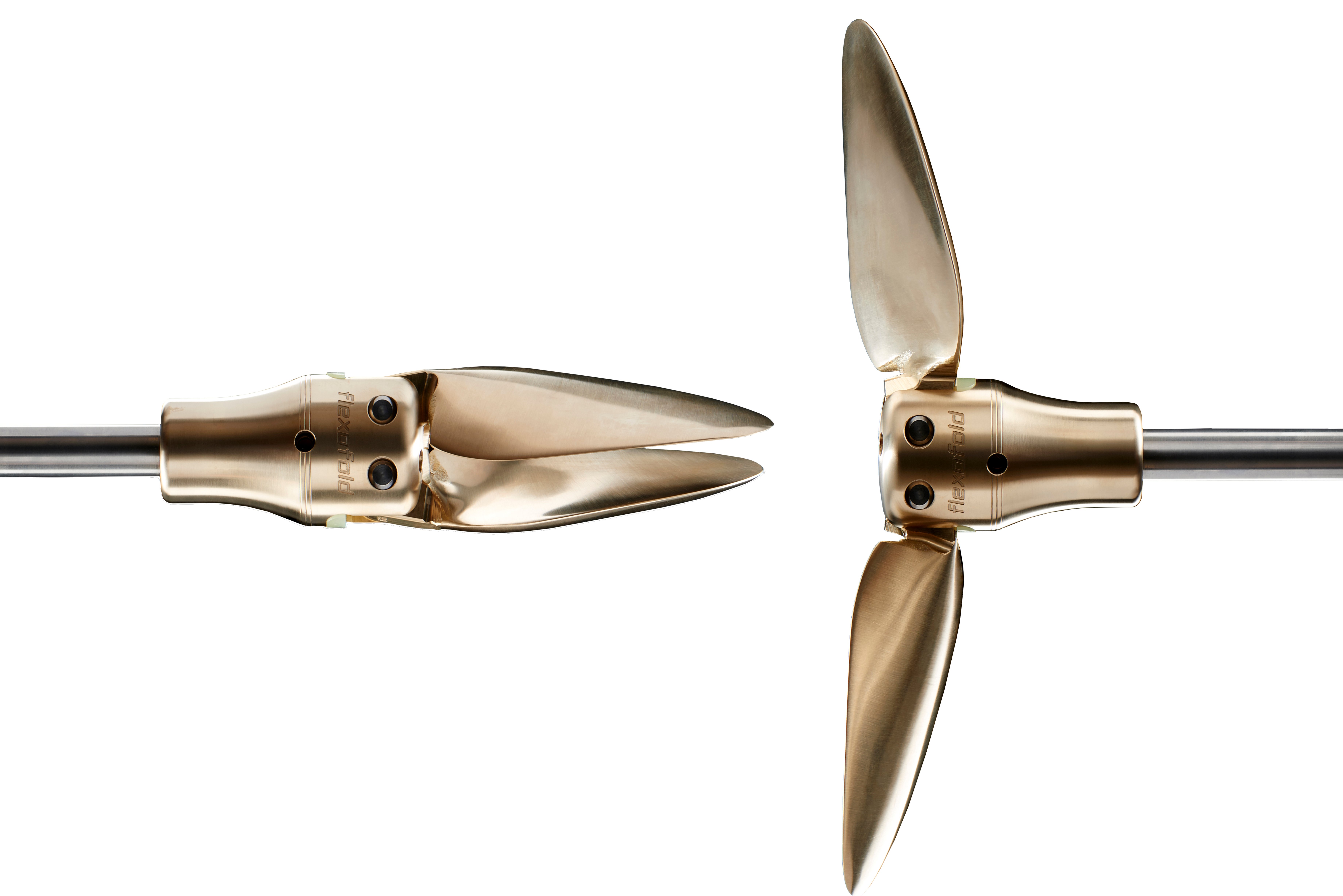
The most fundamental difference between a folding propeller and a feathering propeller is that the blade of a folding propeller twists.
When the blade of a folding propeller rotates, it has a specific angle relative to the water at the bottom of the blade, which differs from the angle at the top of the blade. When a propeller rotates in the water, it has a natural circular motion, and the propeller has a given rotational speed (typically measured in revolutions per minute or RPM). The point at the bottom of the blade has only a small circular motion, so it has a relatively lower speed than the point at the top of the blade. The point at the top of the blade has to cover a larger circular motion compared to the point at the bottom. Therefore, the speed is higher at the top of the blade — also referred to as the peripheral speed. This is why the blade of our folding propellers twists — the speed at the bottom of the blade needs to match the speed at the top of the blade. On Flexofold folding propellers, the pitch angle varies from the bottom of the blade to the top, aligning with the peripheral velocity. Once again, this is a matter of the laws of nature. With the twist, a much more efficient blade profile can be achieved.
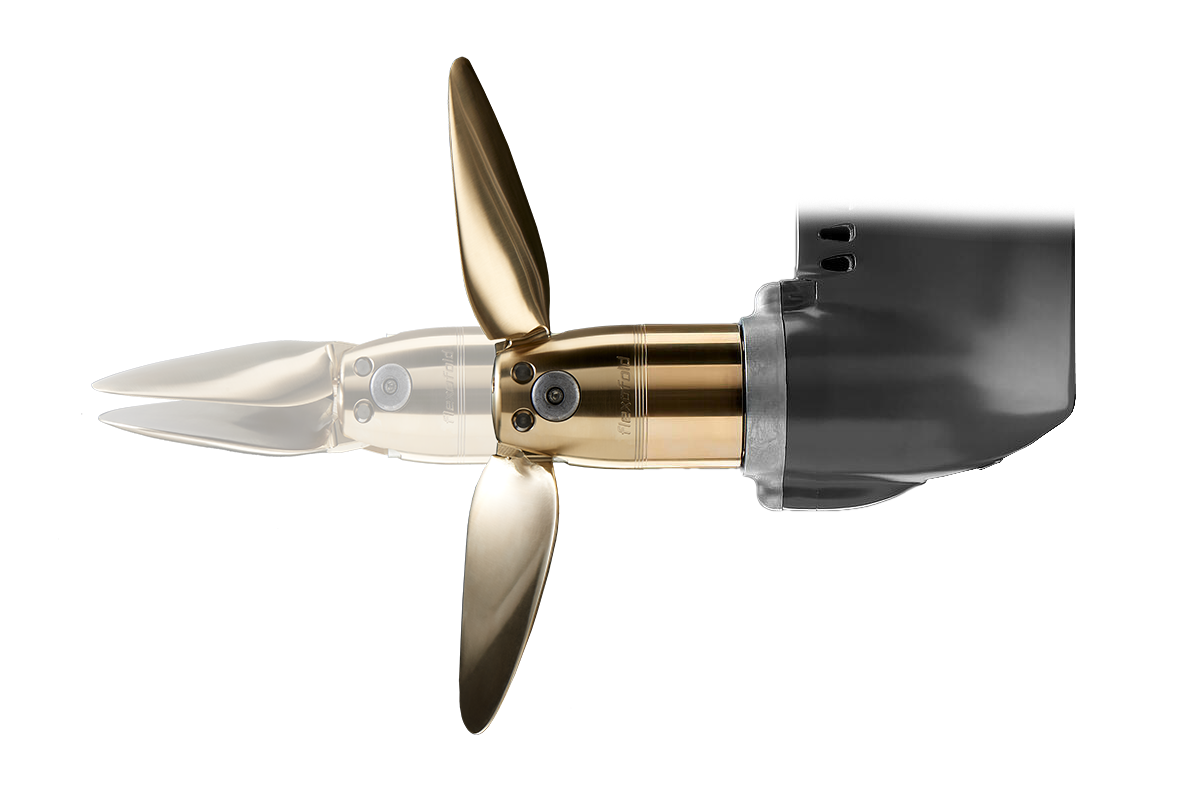
On a feathering propeller, the angle is the same at the bottom as it is at the top of the blade, which makes the angle low at the bottom and too high at the top.
Given the elimination of many mechanical parts and the simplicity of its design, a folding propeller only requires minor maintenance, that being cleaning and polishing. In some areas with heavy fouling, it may be necessary to apply an antifouling coating to the propeller. There are no gears to lubricate, as the propeller components are water lubricated. This simple construction also allows for underwater installation.
Another advantage is increased safety. Due to the folded blades, you won't pick up marine debris such as fishing lines, plastics and old crab pots.
Flexofold folding propellers have a closed gearing, which prevents dirt and, for example, mussels from getting lodged inside. Only a few of our 2-blades don't. Therefore, you can rest assured that your propeller is always operational. Due to the closed gearing, the blades will always be able to fold and unfold.
Regardless of your sailing style, a folding propeller offers distinct advantages. You don't need to be a racer for a folding propeller to make sense.
If you think that a folding propeller is the right choice for you, or if you'd like to hear more about your options for your sailboat, please feel free to contact us. We are specialists in the field and take pride in helping you make the right decision.
We will always advise you to buy the propeller size that is ideal for your boat and your personal preferences, rather than selling you the priciest option.
All you need to do is provide the relevant details about your boat. We'll carry out the necessary calculations for the most ideal folding propeller for your boat and sailing needs. To find information regarding the engine model and gear ratio, you may need to locate your boat's papers. You can't simply google the information, as there may be minor changes, such as variations in the gear ratio, depending on the year the engine was made. Therefore, it's crucial that we get the details specific to your boat. Information about things like the gear ratio can also be found on the information plate on the engine itself.
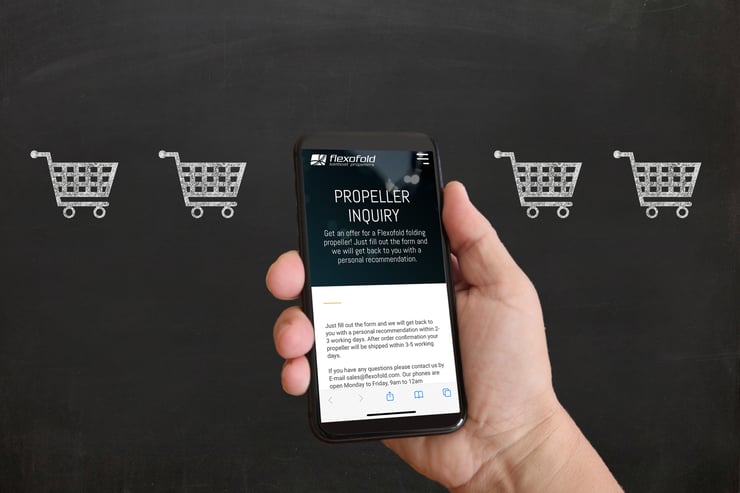
Boats are getting ready for winterizing (that is, if you happen to be in the northern latitudes like us in Denmark). If you're curious about which of our folding propellers would fit your boat, you’re welcome to request a free quote. It's completely non-binding. If you'd like to take up the offer, we'll ship the propeller within 3-5 business days, giving you plenty of time to prepare the boat with a new folding propeller for sailing season 2024.
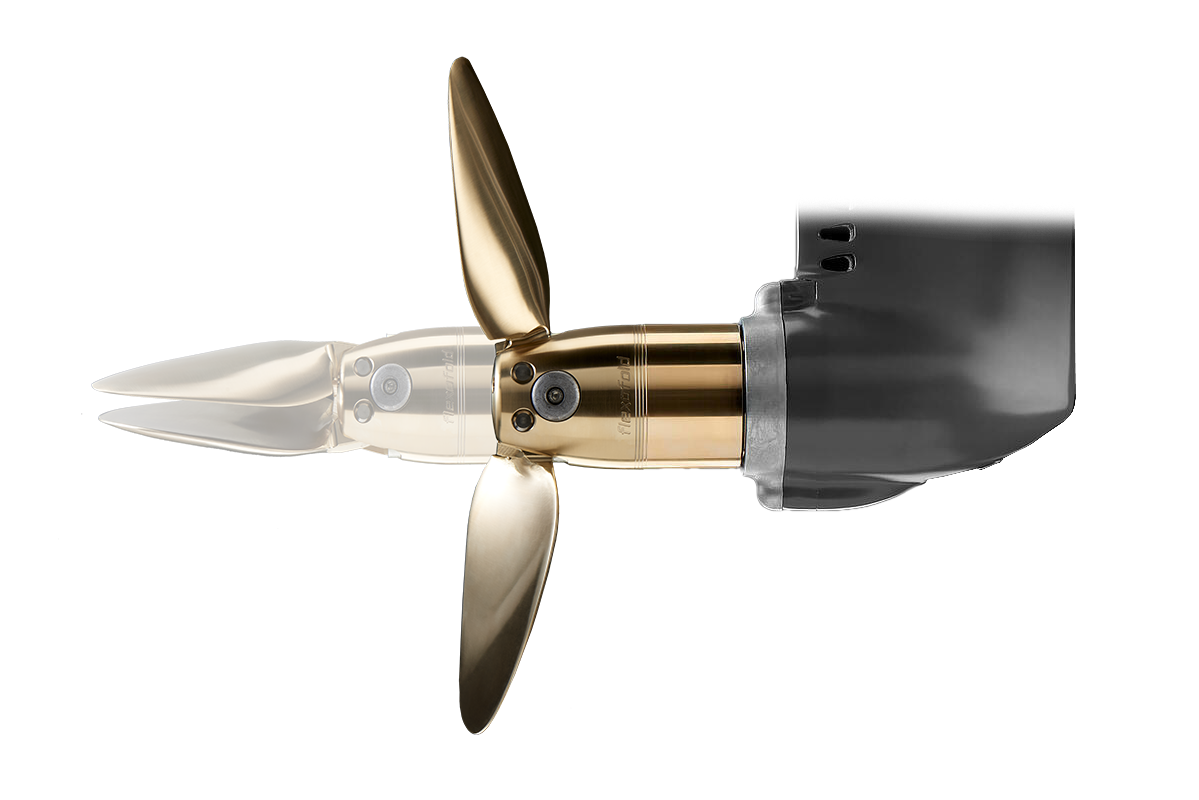
Folding props or not – that’s the big question!At Flexofold we will always choose a folding propeller – and there are many good reasons why. There...
.png)
A folding propeller is not a new invention. It is actually more than 100 years old, and even though the technical aspects and the underlying idea are...
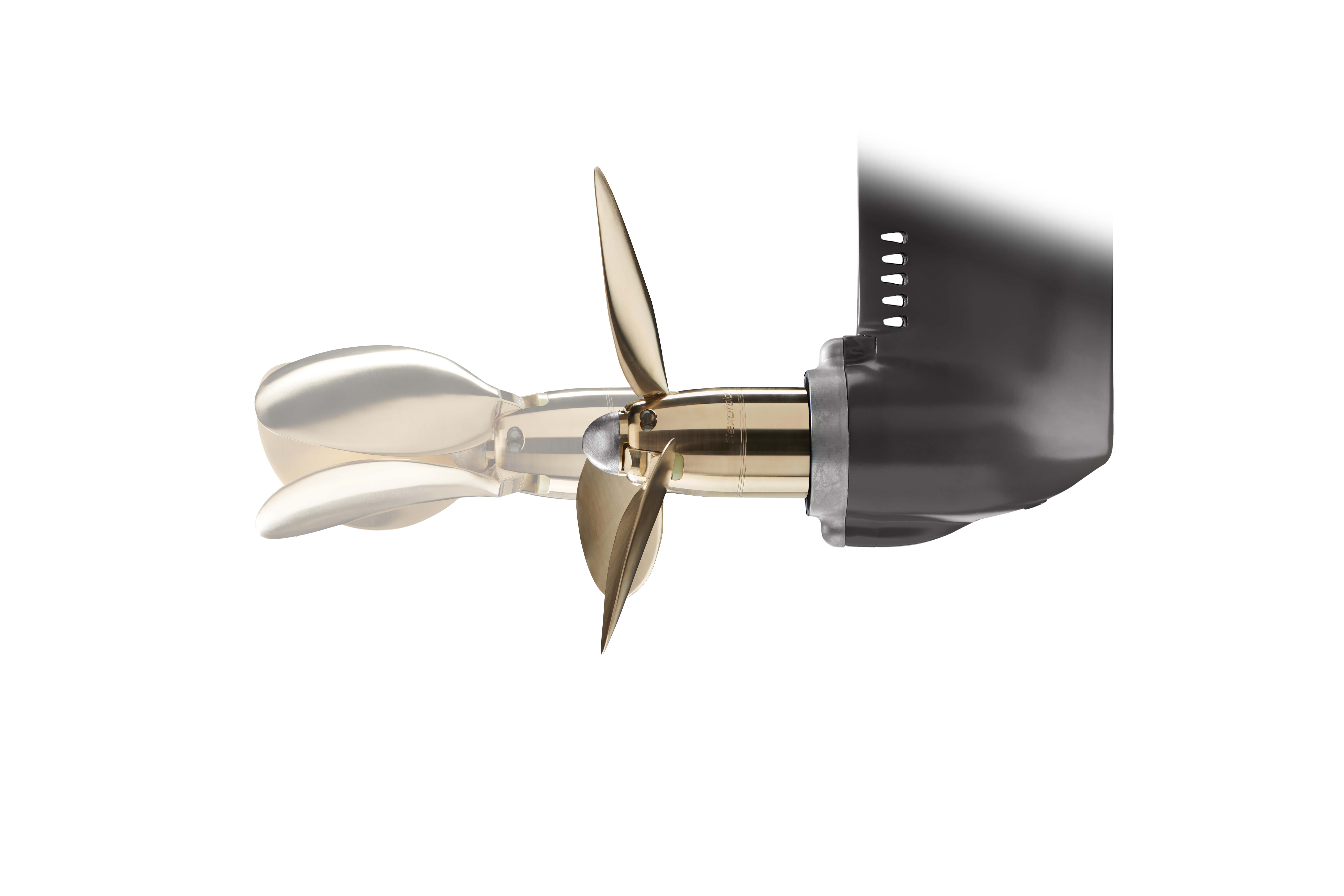
What's the best way to care for your folding propeller?